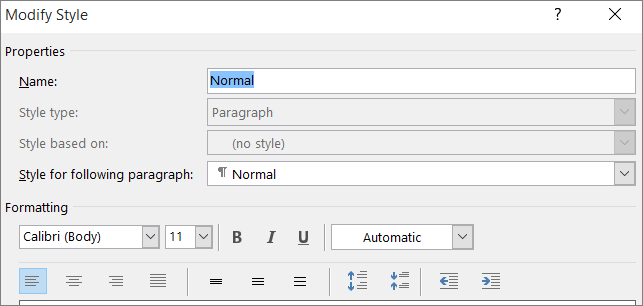In the Font Group Dialog Box, select Gabriola from the Font List box and in the font size box type 42. Note you will see a preview of how your text will look at the bottom of the Font Dialog Box. Click the Advanced tab then do the following: Click the down arrow at the right side of the Scale option box and then click 90. Click the down arrow. Under Color, select Green. Select Condition. In the Search for the word(s) box, enter Contoso. In the Filter, Conditional Formatting, and Advanced View Settings dialog boxes, select OK. Make all messages that contain the word holiday in the subject or message body appear blue. Enter a name for the rule. How to Change the Font, Font Size, and Font Color in the Font Dialog Box. The Font dialog box offers advanced options that aren’t available in the ribbon or the Mini shortcut menu. Select the Home tab in the ribbon (see figure 1). If your document is blank, skip to step 3. Select the text with the font you want to change. The web-based version of Word omits a great many features of the desktop version. In this case, the web version doesn't have a Fonts dialog like the one in the desktop version. You'll find that there is also no Font item in the right-click menu.
In the font dialog box, I have a section for selecting a complex script.
The sample box shows the font in English in TNR (or whatever the selected
font is) plus (I presume) the word 'sample' in a right-to-left font (sorry,
don't know international alphabets, but it looks Middle Eastern). I also
see examples of the complex script when I'm working with style settings.
When I view style definitions, the description always includes the phrase
left-to-right
It seems that at some point I enabled right-to-left languages in my copy of
Word, but I do not recall doing this. It seems to have started about the
same time that I loaded a full copy of Adobe Acrobat. Not sure if it is
related or a coincidence. I also experimented with Voice Recognition and
handwriting.
I have gone to the MS Office Language Settings (under MS Office Program
menu) and there is nothing to disable. The only languaged listed as Enabled
is English (US). I have also looked at all the possible settings under
Regional Settings on the Control Panel and cannot find anything that seems
applicable.
I would like to be able to remove the Complex Script option from my font
dialog box. Other than the fact that it annoys me, the biggest reason is
that I'm writing a book that includes screen shots of MS Word and these
screen shots will not be representative of what others are likely to see in
their own copy of Word.
All references that I have found to date explain how to ENABLE complex
scripts, but there is nothing about disabling or removing.
I am willing to re-load Word and/or Office if this would resolve the
problem. If so, would restoring settings using the Save my Settings Wizard
cause the problem to return?
Thanks so much for any help!

Lesson 18: Font Size
/en/word2000/bold-italics-underline-and-format-painter/content/
Introduction

By the end of this lesson, you should be able to:
- Adjust font size
The Font dialog box
Use the Font dialog box (found in the Format menu) to change your font, preview it, and adjust its size and style.
The font list
To select a font, you can scroll through the font list. The list shows you all of the fonts that are available on the computer you're using.
You can preview a particular font before you select it for your document. The preview window in the Font dialog box allows you to see what a particular font looks like. Previewing can help you select an appropriate font for your document.
Changing font size
The Font dialog box also allows you to change the size of a font. You can use different font sizes to give emphasis to different parts of your document. Font size is commonly expressed in points. Font sizes range from 8 point (extremely small) to 72 point (extremely large).
Arial 10 Point
Arial 12 Point
Arial 20 Point
Arial 26 Point

The standard font size for most documents is 12 point. You can preview different font sizes in the preview window in the Font dialog box.
To change font and font size:

- Choose FormatFont. The Font dialog box appears.
- Click a font from the font list.
- Select a size from the font size list.
- Look at the text in the preview window as you try different sizes.
The Formatting toolbar
The most commonly used font tools (except for preview) are available on the Formatting toolbar. The Formatting toolbar allows you to change font name, font size, and font style.
Although different and unusual fonts can give a document a unique and personal feel, each business has different fonts that are preferred for official correspondence. It is always wise to ask what typefaces or fonts are most commonly used in your workplace.
Microsoft Word Font Dialog Box Template
Challenge!
Experiment with fonts by doing the following:
Microsoft Word Font Free
- Select the Font dialog box from the Format menu.
- Preview the various fonts, styles, and sizes available in Word.
- Select several font size and style combinations. After you make your selection, click OK.
/en/word2000/bullets-and-numbered-lists/content/